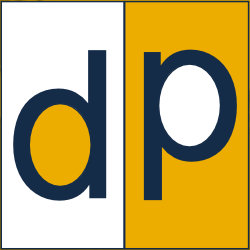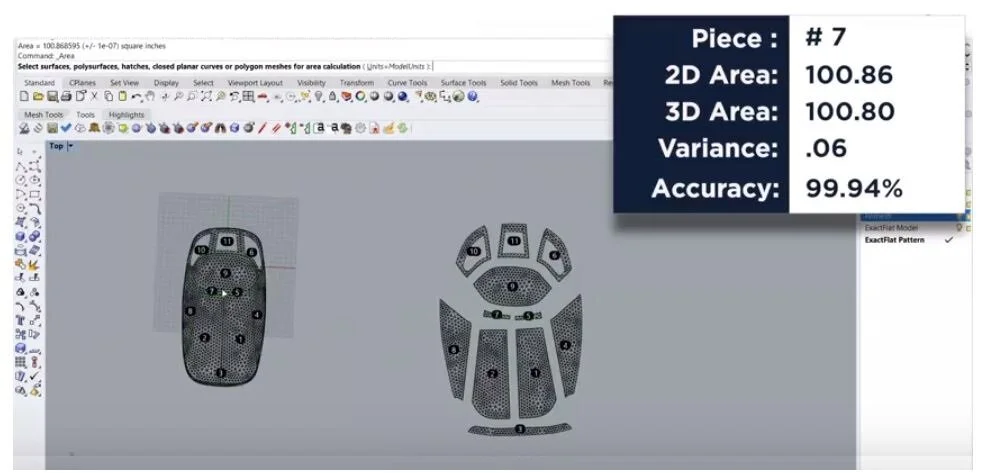How do Digital Pattern Makers get such accurate results?
Speed and Accuracy: Key requirements for 3D Flattening
The ability to deliver accurate and fast 3D to 2D flattening results is a key requirement when considering the transition to digital patterning software. The combination of these capabilities can increase pattern making throughput by between 3x and 16x.
Getting to great digital patterning results is dependent on several factors. This article provides a discussion of three of the most important of those factors.
Factor #1. The initial Tessellation (meshing) of the 3D design
Before a 3D CAD model can be flattened into a 2D pattern, the 3D design must be converted into a 3D mesh. Meshing or Tessellation is a mathematical process used to represent the surfaces of the initial design model as a series of polygons (triangles) with no gaps. The primary goal at this stage is to ensure that the perimeter lengths and surface areas of the initial 3D design (input) match the corresponding lengths and areas of the 3D mesh (output). Good results are a function of mesh density (i.e. number of elements per inch or mm) as well as the shape or aspect ration of each element. The current generation of 3D CAD products usually provide tools to control and validate the accuracy of the tessellation process.
Accuracy Benefit: The 3D mesh matches the original 3D model.
The image shows the sample model with varying degrees of tessellation. Specific tools within the CAD package are used to convert the 3D design model into a 3D mesh. Several factors including density, and element type and aspect ratio affect the margin of error between the design model and the resulting mesh.
Factor # 2. The tools which enhance the 3D Mesh Quality
While 3D CAD software can convert surfaces into a tessellated mesh, the mesh results are typically not optimal for 3D flattening. Dedicated digital patterning software solutions like ExactFlat are used to enhance the mesh quality in order to decrease flattening time and increase pattern accuracy. Good quality meshes are characterized by:
models with no more than 5,000 triangles,
connectivity of six mesh elements (triangles) per vertex,
an aspect ratio of 1:1 for adjacent triangle edges,
a typical angle between the triangle edges of 60 degrees,
uniform triangle size and density throughout the mesh
Mesh quality optimization tools are standard features in digital patterning software solutions. This ensures the best starting point for the 3D flattening process.
Accuracy Benefit: The 3D mesh produces error-free results
Factor # 3. The Flattening Algorithms
3D flattening software utilizes advanced, finite element-type algorithms to convert 3D meshes into 2D pattern pieces. These tools simulate the actual unfolding behavior of the fabric based on precise material property data. Depending on surface complexity and material type, different algorithms are used for this step.
Most 3D flattening tools employ some combination of the following types of algorithms
Linear Isotropic algorithms
Linear Orthotropic algorithms,
Load Ratio algorithms (load to stress ratio),
Cubic Orthotropic algorithms,
Quantic Orthotropic algorithms.
In a user-focused 3D Flattening solution like ExactFlat, selection of the appropriate flattening algorithm is automated. Visual feedback helps pattern makers validate flattening accuracy throughout the process. Precise control and algorithm selection features are available for advanced users or simply as a way to check or tweak results.
Accuracy Benefit: The algorithms simulate the exact fabric behavior.
ExactFlat: The Experts in 3D Flattening
3D to 2D patterning speed and accuracy have a tremendous impact on pattern making through put and project costs. Finding ways to optimize the capabilities and processes desired here are critical factors when making the come to digital patterning. To gain a better understanding of the tools and advantages of ExactFlat click on the link below and schedule a time to speak with one of our experts.











